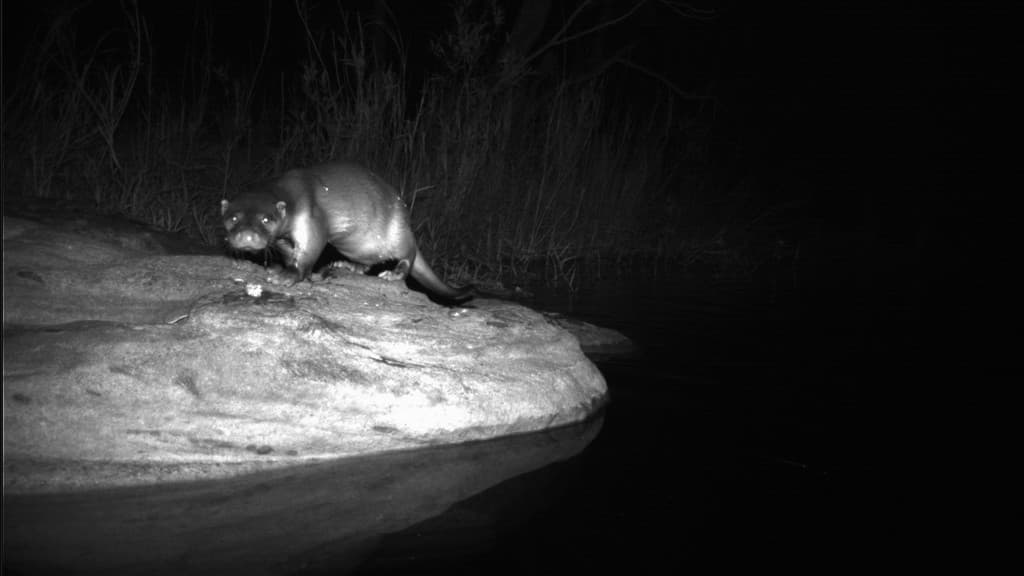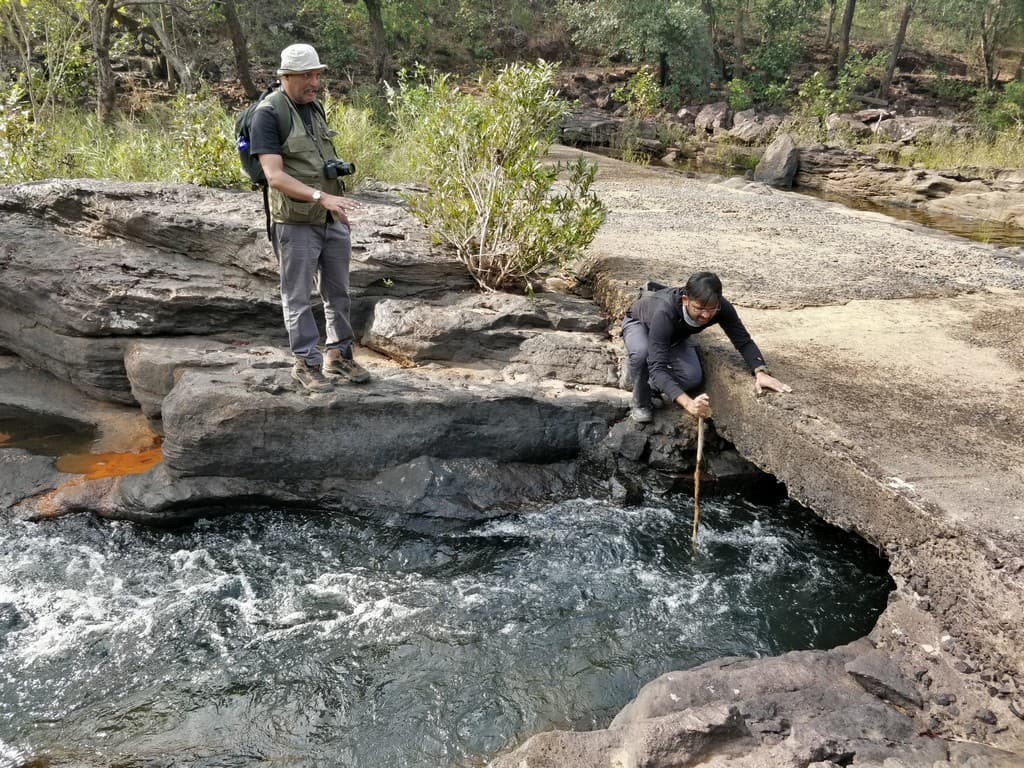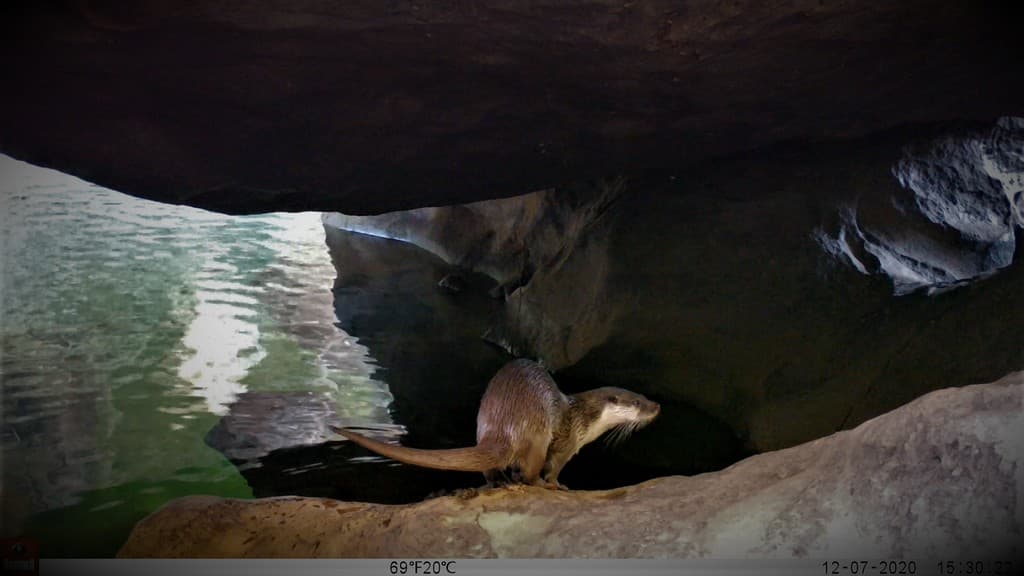The discovery of the Eurasian otter (Lutra lutra) in 2016 in the Satpura Tiger Reserve, Madhya Pradesh, by WCT, highlighted the need to investigate several other lesser-known species in the Central Indian Landscape. Since then, WCT has undertaken a detailed study, in collaboration with the Madhya Pradesh Forest Department, on the hydro-ecology of the Satpura Tiger Reserve with the objective to achieve effective monitoring of forest streams/rivers and species dependent on river ecosystems.

Photographic evidence of Eurasian otter in the Satpura Tiger Reserve, Madhya Pradesh, obtained through WCT’s camera trapping exercise. Photo credit: WCT
One of the main objectives of the project is to understand the current distribution of Eurasian and smooth-coated otters in relation to the status of perennial forest streams and water reservoirs. This will help to identify key areas of conservation and best practices for safeguarding these unique ecosystems.

WCT field team measuring river parameters in the Satpura Tiger Reserve. Photo credit: WCT
Overview of Otter Ecology and Hydrology Project
Rediscovery of Eurasian Otter

Photo credit: WCT
The Eurasian otter is found largely in Europe, Africa, and Asia and is one of the rarest mammals in India. Based on extremely scanty historical records, it was believed to exist in India along with the two more commonly found species: Smooth-coated otter (Lutrogale perspicillata) and Asian small-clawed otter (Amblonyx cinereus).
As per old records, the Eurasian otter was believed to occur in the Himalayas and in some remote high-altitude streams in southern Western Ghats. However, there was no direct evidence to confirm its presence in India.
According to the International Union for Conservation of Nature (IUCN), this species is listed as ‘Near Threatened’. Throughout its historic range, this species has either gone extinct from several regions or its population has drastically reduced. WCT’s discovery of the species in 2016 in the Satpura Tiger Reserve extends its geographical range to Central India and also provides the first ever photographic evidence of its existence in India. This phenomenal finding underlines the value of large inviolate Protected Areas in conserving biodiversity.
Your donations support our on-ground operations, helping us meet our conservation goals.
Related Links
- Eurasian Otters – Lost and Found
- Proven: Eurasian Otters found in India
- Wildlife Population Estimation
- Otters In Tiger Country
- Effects of Road Network on Gaur
- Leopards and people seem to coexist

